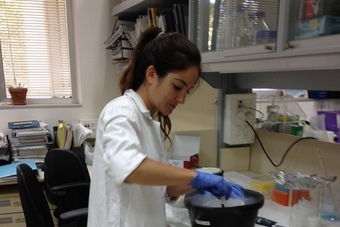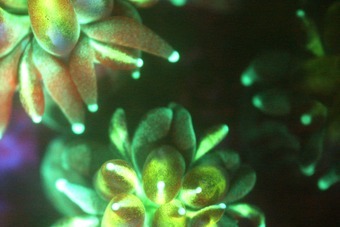Publications:
Ben-Zvi et al. 2015
Light in the sea is one of the major factors influencing corals, with changes in light being rapid along the depth gradient. Those changes can be a potential stress factor for coral-reef organisms and affect different aspects of the coral’s physiology, including its fluorescence. Fluorescence is a physical phenomenon, comprising the emission of light by a substance that has absorbed light with a different wavelength. Major hypotheses concerning the role of coral fluorescence include that of photoprotection and the facilitation of photosynthesis. We sought to further investigate some ecophysiological aspects of coral fluorescence. We focused on the effect of different light conditions on fluorescence of the coral Galaxea fascicularis and used photography, confocal microscopy, and spectral measurements to assess changes in its fluorescence. We show that fluorescence is significantly influenced by light and, therefore, by depth. Coral fluorescence increased with the increase in light intensity and when the spectrum of light was broader. Hence, we support the “sunscreen” hypothesis and conclude that fluorescence plays a role in the coral’s defense mechanism against harmful radiation. However, multiple fluorescent proteins, as found in different locations of the coral tissue, might suggest more than one functional role of fluorescence in the coral’s physiology.
3- 50 m
Mesophotic “mentions”
4 x (total of 4394 words)
Classification
* Presents original data
* Focused on 'mesophotic' depth range
* Focused on 'mesophotic coral ecosystem'
Fields
Ecology
Physiology
Focusgroups
Scleractinia (Hard Corals)
Symbiodinium (zooxanthellae)
Locations
Israel - Red Sea



